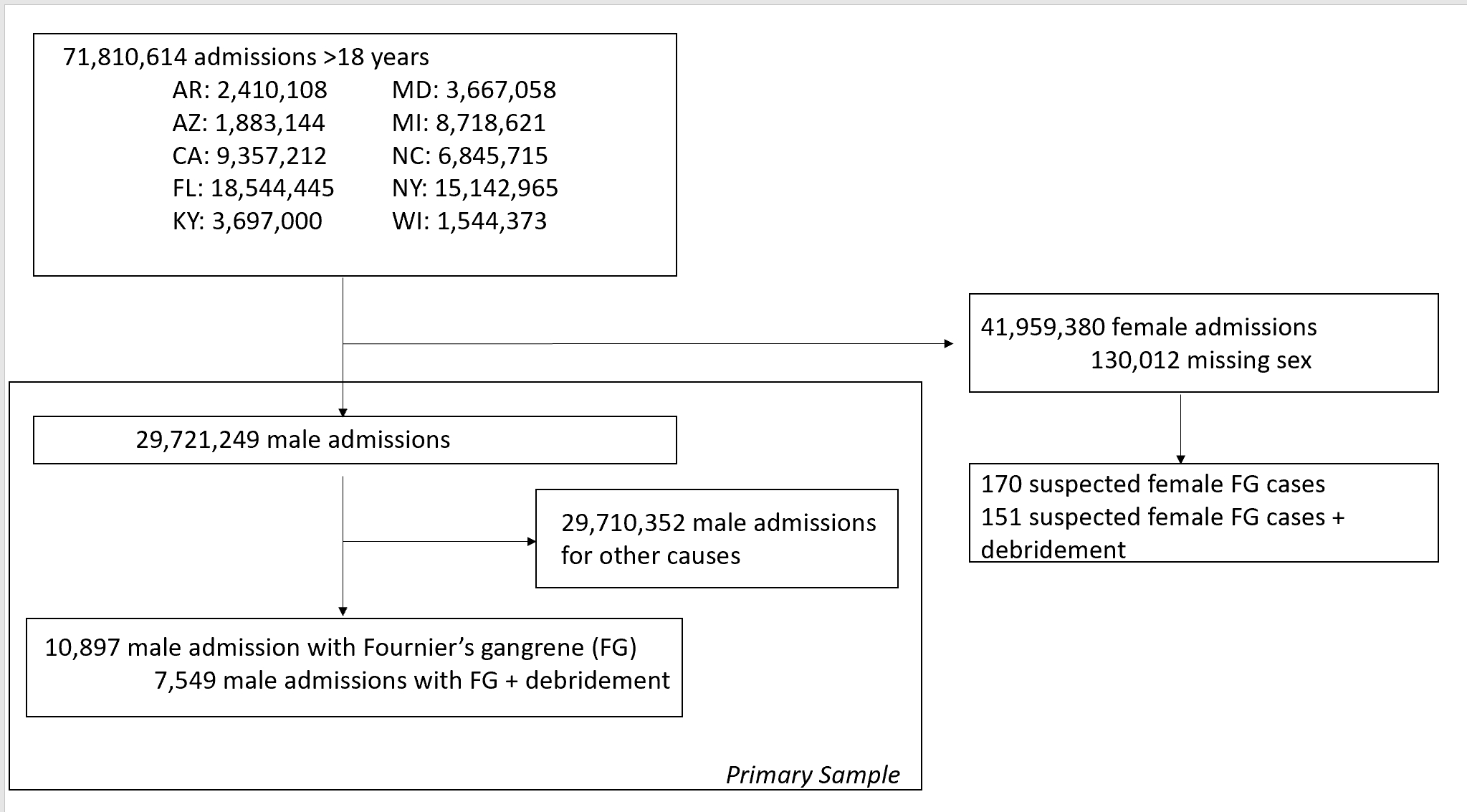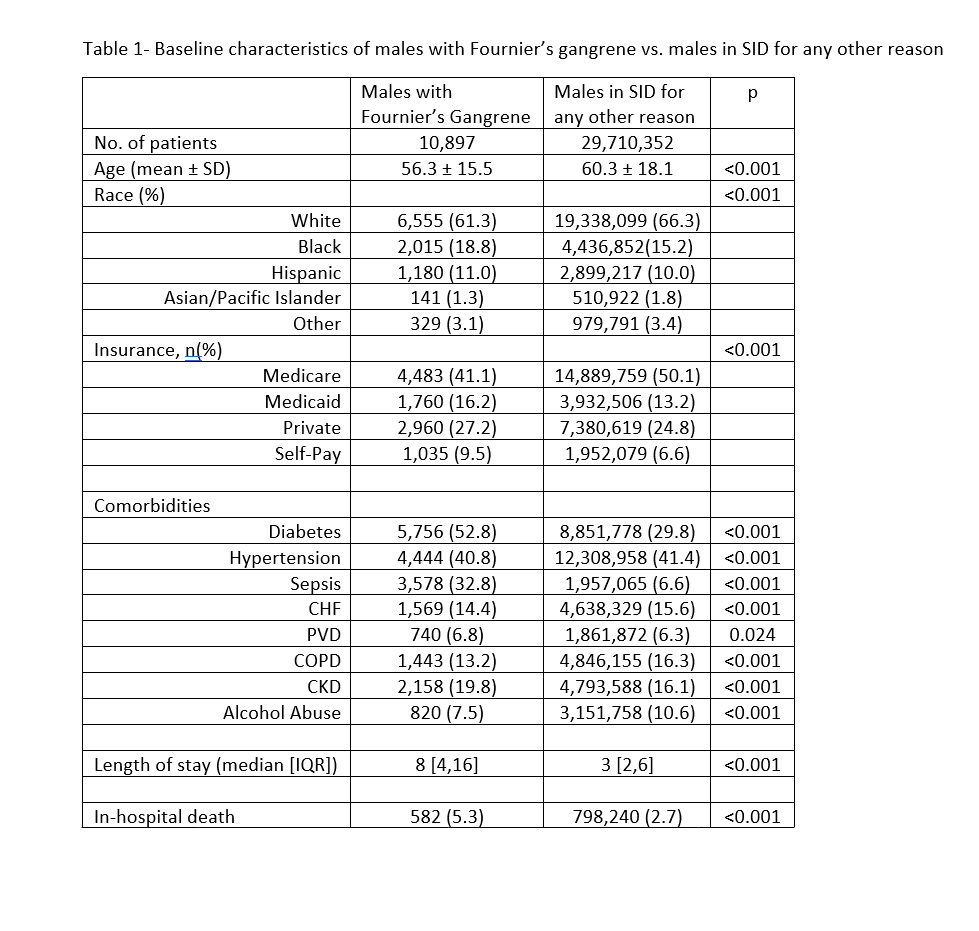Morbidity and Mortality Trends of Fournier's Gangrene: A Population-Based Analysis Between 2008-2015.
Emily J. Zolfaghari1, Alexander Kuehne2, Nicholas Ingraham3, Samit Roy3
1General Surgery, Yale University, Bridgeport, Connecticut, United States, 2Yale, New Haven, Connecticut, United States, 3University of Minnesota, Minneapolis, Minnesota, United States
Objective - There are few large epidemiologic studies reporting the incidence, complications, management, and outcomes related to Fournier's gangrene for hospitalized patients. We used a national database to investigate contemporary trends in the epidemiology of Fournier's gangrene.
Design/Setting - Data from the Healthcare Cost and Utilization Project's (HCUP) State Inpatient Database was utilized from 12 states between 2008 - 2015 from 12 states.
Patients - Patients with a diagnosis of Fournier's gangrene (ICD-9 608.83), which is a classified as a disease of male genital organs. To identify female patients, we identified adult women admitted with a diagnosis of gangrene (ICD-9 785.4) and either vulvovaginal gland abscess (ICD-9 616.3) or vulvar abscess (ICD-9 616.4).
Intervention - Patient and hospital-level data were used to provide descriptive information as well as to estimate incidence, trends, and mortality rates.
Main Outcome - Medical comorbidities, demographic factors, outcomes, and in-hospital mortality of adult male patients admitted with Fournier's gangrene are significantly different compared to patients admitted for other medical conditions.
Results - We identified a total of 10,897 (0.02%) cases of Fournier's gangrene out of a total 71,810,641 hospitalizations. Median age among of patients with Fournier's was 56 years (IQR: 46,67) and 6,555 identified as white (61.3%). Median length of stay was 8 days (IQR: 4,16) and did not vary significantly over time (p=0.4). Debridement occurred in a total of 7,549 patients (69.3%), with a range between 67.7%-70.8% per year, which was stable over time (p=0.4). A total of 582 patients (5.3%) with Fournier's gangrene died in-hospital, with a range between 4.7%-6.7% per year which was stable over time (p=0.2).
Conclusions - Fournier's gangrene is a rare but serious infection. While mortality has remained unchanged, medical comorbidities related to Fournier's gangrene have increased over time, such as history of alcohol abuse, congestive heart failure, and chronic kidney disease. Understanding trends in outcomes and management of Fournier's gangrene can help identify further topics for research and improve collaboration in managing these patients.

Figure 1

Table 1

Table 2
Back to 2022 Posters
